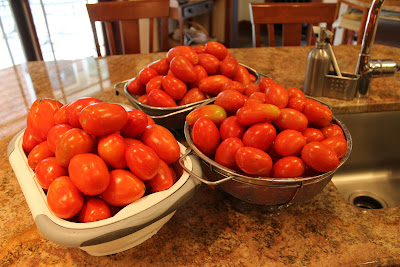I'm not very good with either cut flowers or houseplants. One touch from me and they wither and die. Of course, if I ever remembered to water them, the outcome would surely be different, but that never seems to happen.
This is the one time of the year where even my black thumb can't really do too much damage, because hydrangea are one of the few cuttable flowers left in the garden and by this time of year they're already pretty close to being petrified. So I defied fate after writing about those and the anemones, and now our dining room table is graced with a vase full of both. I don't have to worry about keeping the hydrangea alive, but the anemones have been put on notice that they may be in peril. I can't claim to be any more adept at arranging indoor blossoms than I am at keeping them alive, but this is about as good as it gets.
 | |
| Can't kill the Hydrangeas, because they're already past their prime; the anemones are on their own, however! |
We've lived in the same area for the past 30 years. And in all that time, one of the few things we have been able to count on is a killing frost the first week of October. The last weeks of September have always been a flurry of picking, freezing, pickling, and canning in advance of that merciless deadline. Last fall was the first time this timing slipped, and we got our first hard frost in the second week. Chalk that one up to margin of error.
This year, however, it's now three weeks into October, and we're still ripening tomatoes on the vine! Here are the ones we plucked just hours before dinner on Friday -- plump, juicy sun kissed fruit, delicately dressed with a bit of olive oil and white balsamic vinegar, salt and pepper, plus some scallions from the next bed, all arranged on a bed of arugula dressed only in a drizzle of fresh lemon juice.
 |
| Yellow Beefsteak and Prudens Purple with fresh-picked scallions |
I close my eyes and I'm tasting August.
October 22 and we're still harvesting: as convincing a case for global climate change as I'll ever see in my own back yard.





















